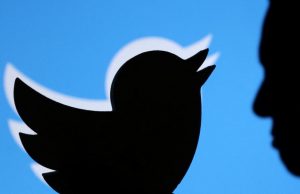In the world of digital media, Dante’s seventh circle of hell is reserved for businesses that fail to fully understand the power of social media. Companies eager to benefit from social media campaigns, but lured by the temptations of the seven cardinal sins can encounter scathing negative attention and PR disasters.
I spoke with Apurva Chamaria, head of brand and digital at HCL Technologies Ltd., who offers some colorful examples of what can go wrong. You are well-advised to avoid these temptations, although as you’ll see below, not even we are immune. The examples are based on actual case histories; the names and context have been altered to safeguard the identities of the guilty organizations, except for our own.
Lust – In the context of social media, lust can be defined as an intense desire for fame and popularity. This desire can manifest itself in terms of over-broadcasting company views or content. Social media, unlike traditional platforms of publishing, is a two-way communication platform; more like a telephone than a megaphone. Social media fans do want to be included in interesting conversations and stories involving your brand, but do not want to have their feeds spammed. Flagrant broadcasting comes across as a desperate cry for attention.
A trendy retail outlet exhibited lust when they began each of their tweets with a different trending hashtag. Unfortunately, the hashtags bore no relationship to the content of the tweets. The company chose tags like #iPad, #mms, #Apple, in an attempt to lure followers to their content and enroll them in their database. This desperate tactic was quickly identified as #hashtag spam.
Sloth – Social Media is about conversations. This may sound hackneyed and clichéd, but the reason social media has become such a phenomenon is its ability to generate two-way conversations. With social media, businesses can easily interact with customers on a one-to-one basis and communicate as genuine, human-faced organizations. But to do this, brands must eschew automated responses. Social media may be a real time response platform, but social denizens understand that the organization is not available 24×7 to respond to their queries. Companies that are lured into the trap of automated responses tend to be found out, leading to humiliation and ridicule on the web.
A very large company was brought to task when their Twitter-bot got caught in an automated response loop. A non-customer mentioned the company in an unforeseen context. The bot then got tangled in a series of replies wholly-oblivious to the concerns raised by the expanding audience. The company then was auto-tweeting to everyone who responds to a consumer’s privacy concerns.
Pride – Social platforms are a mouthpiece for the organization’s values and belief system. As with any official communication, businesses need to maintain composure and respect for customers at all times. Negative or rude communication can be disastrous to brand value and ultimately profit. Imagine that you register a complaint and the top echelon of the company calls you ignorant. In fact, the CEO of a budget leisure time firm (let’s call them LTF) did just that in Facebook. The result was a double-digit drop in profits. Here’s the disguised version of the LTF CEO post:
“This woman wrote to me yesterday asking for compensation and a gesture of goodwill. To which we have answered, with appropriate dignity, thank you Ms. X but it was your mess-up.” The social media response was swift and damaging. Several “I hate LTF” websites were spawned and LTF profits dropped 29 percent, while their competitors posted better than expected profits.
Envy – In social media, it is generally acceptable to build from the success of others, but it is never a good idea to simply copy another company’s entire campaign. That was the mistake made by one multinational giant, who ran an “inspired campaign” based on the video-based program of a consumer products company. The company used the identical concept, similar naming, channels, and even hashtags for their campaign. The cloned campaign failed because this company’s brand identity just did not fit. Company took a beating for copying another’s concept without understanding their target audience and positioning.
Wrath – Businesses must always maintain their cool in social media communications, even in the midst of negative outrage or an over-active rumor mill. Here are two very-different examples of businesses reacting to negative social commentary, one with regrettable consequences and the other with success.
A specialty products company faced a social media uprising that originated from a negative TV review focusing on their pricing. The company lashed back that it was not their fault that the followers could not afford their high quality product and service. This turned extremely ugly for the company, demonstrating quite clearly how not to react to negative situations on social media.
A better path was chosen by a consumer product company that responded to a rant about the company selling a “pack of lies” with a parody video in which a stand-in CEO entertainingly accepts the charge and apologizes. This bold use of humor went over so well that even the disgruntled consumer was satisfied.
Greed – Businesses are well-advised to avoid superficially using corporate social responsibility (CSR) campaigns to blatantly drive business. Programs that drive clicks or sign-ups in return for a company donation are seen as insensitively using a charity for commercial gain. These gimmicks show extreme brand insensitivity and generate more online criticism than support.
One company promised to commit for a cause, but only after their Facebook update received 50, 000 likes. The post went like this: “Let’s remove hunger from the world! We promise to commit $50,000 if we receive 50,000 likes. Spread the word and contribute your share to remove hunger.”
Gluttony – The inordinate desire to consume in excess of what one requires has often snared new social media operatives. Over-consumption can occur with media platforms, tweets, or followers. In their quest to grow their base of followers, more than one politician and marketer has been caught following-back escort services and entertainment sites, or liking Facebook pages related to far-out political groups or intimate anatomy parts.
The mistake we made at our company back when we getting started with social media was also a form of gluttony. Eagerness to draw attention to a blog we had written on social business, a large number of employees tweeted about it. Unfortunately, they all used the same two hashtags: #cio and #socbiz. The response from Twitter was quick and firm: don’t flood those hashtags! Our burst had rendered the hashtags temporarily useless.
In summary, companies must remember that authentic engagements, with positive intentions and solid content, will help develop meaningful awareness and relationships that is based on mutual respect and trust.
This post was co-authored by Apurva Chamaria.
Follow Vala Afshar on Twitter: www.twitter.com/ValaAfshar
(673)






